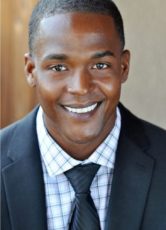
Much of casting seems shrouded in mystery. Actors routinely pour their hearts out before the camera for professional teams to examine, and then the selection process is made behind closed doors, with little or no explanation as to who was chosen for the role or why. Casting director Clifton Guterman, from Big Picture Casting, manages to shed some light on the process in a recent interview with photographer Robert Mitchel Owenby. Based in Atlanta, Big Picture’s work includes “American Made,” “The Good Lie,” “Hangman,” and “Finding Carter.” As an actor-turned-casting director, Guterman discusses the most important aspects of actor headshots and self-tapes, and he explains why some actors tend to book more frequently than others.
Self-taped auditions need an arc
Guterman emphasizes the importance of telling a story in self-taped auditions. “A big thing that is a pet peeve,” he reveals, “is an actor who will turn in a tape that’s a significant scene, and it never goes anywhere. It has no story, there’s no arc, there’s no beats, it has no beginning, middle, end. It just starts, it’s the same in the middle, and they’re the same when it ends. It’s as flat as it can be. Even in the smallest scenes, we can tell a story. I think it is our job to tell an ABC kind of story and look for those internal beats and figure out what those are.”
The most important aspects of headshots
Guterman acted in Atlanta-filmed movies, television shows and commercials, and in doing so had attained his fair share of headshots over the years. And now, from his new vantage point as casting director, he sees headshots in a whole new way. “This was a big sort of wake-up call for me when I flipped over from the actor side to the casting side of TV and film,” he shares. When it’s time to select actors to audition, he says, “I’m seeing just hundreds of thumbnails for submissions and then deciding from those who to call into tape. So a headshot that looks really great in thumbnail frame is someone that’s framed well enough that the person takes up most of the thumbnail, that they’re in focus, that there’s not some busy background distracting, that the actor is the focus and that there’s something active going on in the eyes.”
Guterman continues, “And that the actor knows their color palette at this point in their career, knows what to put themselves in that they look great in. And I always suggest people go for a timeless-look attire that’s not super dated or super trendy that a year from now it’s going to look a little silly. If you need help, go have someone help figure out what your color palette is, but those stand out. People who look like real people and who are taking up most of that thumbnail, and it seems alive.”
Allow yourself ample time to cultivate your skills
If it seems like certain actors book more frequently than others, Guterman explains that it’s likely due to the effort they’ve devoted to their skills over time. He explains, “I think there are probably several things at play: That person has probably learned how to audition really well. That person has probably made a fan of casting because they show up and really show up and do the work, and casting offices can count on them to turn in great tapes. And then when they come to us in callbacks, [they] knock it out of the park or interact with teams.” The actor has likely learned how to memorize lines more efficiently, garnered more experience with making creative choices, and has grown a better sense of how to weave him or herself into the role and communicate with increasing ease with the casting executives during auditions.
Also important is how accessible and responsive the performer is to agent calls. Guterman continues, “So yeah, I think there is probably a fair amount—just like in every artistic medium—when directors love actors and often cast them over and over again throughout their careers … It’s a trust thing, and it’s a relationship-building thing. And I think there’s something to be said for exposure. The more someone books and credits they accumulate, it’s more for a client to watch clips of and it’s more to see. And there’s something to be said for seeing clips from a major show or film and [directors] knowing [the actor] has worked on something of that scale or seen credits on a résumé [working] with people they know—directors or producers or networks—and say this speaks a lot that they’ve been cast that many times in that many ways. Yeah, it does make it hard for newcomers. It does sort of make people go, ‘I could do that! Why doesn’t she take a break?’ But she’s also probably worked very, very hard.”
Guterman acknowledges that not every performer is currently ready to meet all these objectives, as developing these skills takes experience and grit—even more than passion and talent. “I think probably you would find that those actors have a combination of many elements that they have honed over time that just makes them be able to work really fast and cleanly and professionally and they know themselves at that point.”




